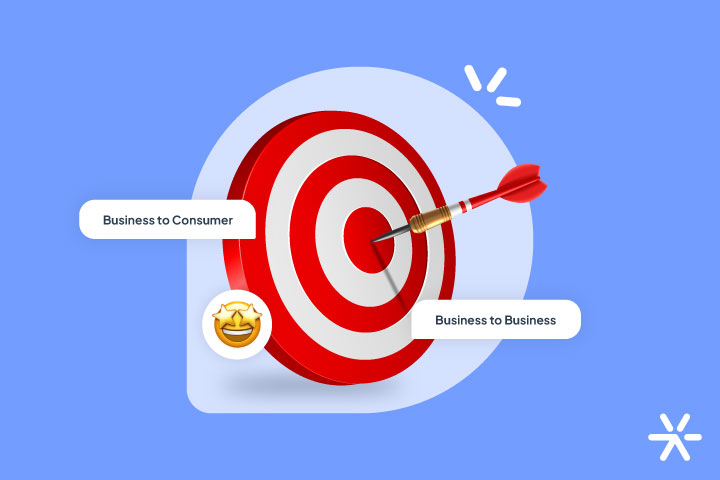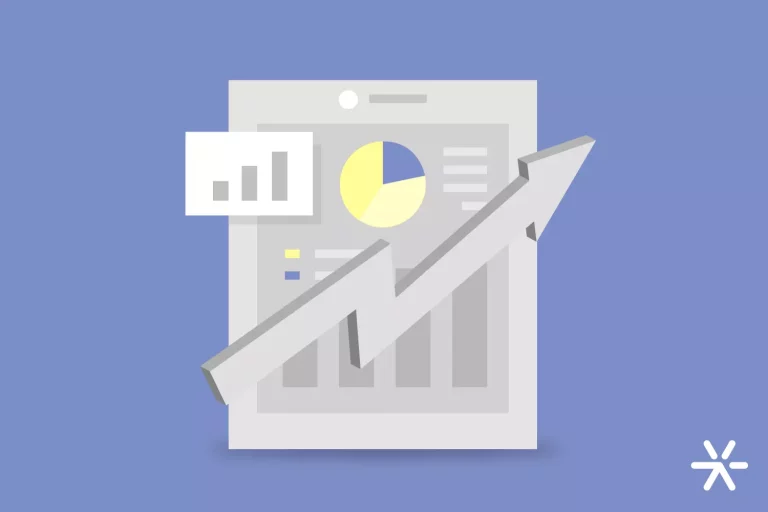13 Mental Triggers for Sales That Still Work in 2025
The Main Goal of Any Company Is to Sell What It Produces
However, to achieve this goal, many steps must be taken before the long-awaited “yes” finally comes — and to reach that answer, some tools from neuromarketing can help, such as mental triggers for sales.
Widely used to create shortcuts in the customer’s decision-making process, a mental trigger needs to be carefully thought out before being put into practice, especially because today’s consumers are more aware and can sense when something doesn’t feel natural.
With that in mind, we’ve listed 9 mental triggers that still work very well to boost your sales.
Keep reading to learn more!
What Are Mental Triggers?
In short, a mental trigger is a piece of information that might seem casually inserted into an article, but actually sparks an automatic reaction in the mind of someone using a product or service.
Our brains are programmed to make countless decisions throughout the day — all automatically.
Some examples include blinking, deciding whether or not to go to the bathroom, or drinking water when thirsty.
And this same logic applies to sales mental triggers, as they are used to nudge people toward making a purchase.
However, it’s important to note that this tool has nothing to do with manipulation, as we’ll explain further in this article.
🔎 Also read: Unique Selling Proposition: What It Is, Its Benefits, and How to Create One
How Do Mental Triggers Work?
The human brain makes different types of choices all the time — some that require more attention, and others that don’t.
We can split these decisions into two groups:
- Fast thinking, when the brain seeks shortcuts to find the fastest solution;
- Slow thinking, when the brain detects a more difficult choice and needs more time to process the answer.
Another factor influencing our decisions is how familiar we are with a subject — the more knowledge we have, the easier it is to make a decision.
According to a study by the American Association for the Advancement of Science (AAAS), decision-making happens in three stages:
- The brain selects what will be done;
- The decision appears to emerge naturally into consciousness, giving the illusion that it’s a conscious choice;
- The action related to the decision is carried out.
Understanding these stages and how our brain processes information helps explain the countless involuntary decisions it makes for us every day.
Since marketing heavily depends on consumer behavior, this has become a major field of study.
With this knowledge, a sales team can understand how a particular audience makes purchasing decisions — and craft strategies to ensure their choices fall into the fast thinking category.
That’s why mental triggers are developed — they’re present without us even noticing, but our brain has already picked up on them and is sending signals to take action.
If you want to dive deeper into the tricks your brain plays on you every day, check out the video below:
At this point, you might be wondering if placing subtle cues for the user is a form of manipulation, right?
Well, mental triggers don’t manipulate — they persuade.
Here’s the difference:
- Manipulation – getting someone to make a decision unconsciously or even pushing them to act against their will.
- Persuasion – encouraging someone to recognize that the action they’re taking aligns with their own goals.
🔎 Also read: How to Create a Good Client Proposal and Close More Deals – Essential Tips and Steps
Why Don’t Mental Triggers Work Like They Used To?
Today’s consumers are bombarded with information at all times, especially in the digital age.
To cope, they’ve learned to filter what’s important — and spot forced sales tactics.
This awareness can backfire on certain strategies that once worked. A classic example is the infamous “50% off the doubled price” trick used by many companies during Black Friday.
That’s why to make mental triggers truly effective, they must be used ethically and with care — because they target your customer’s emotions.
🔎 Also read: How to Win Customers: 20 Strategies
What Are the Most Effective Mental Triggers for Sales?
In 1984, American psychologist and researcher Robert Cialdini published the book Influence: The Psychology of Persuasion, where he introduced six principles that became the foundation of modern sales mental triggers:
- Liking (Affinity)
- Authority
- Consistency and Commitment
- Scarcity
- Social Proof
- Reciprocity
Nearly four decades later, these principles still hold up — though in the digital era, they’ve been refined and expanded. Below are some key mental triggers still driving results:
Affection or Liking Trigger
Nowadays, people buy from brands that resonate with them. That’s what the affection trigger is all about — driving emotional connection and comfort in the buying process.
A great example is building a strong and reciprocal relationship with your client. The more emotionally connected they are with you, the more likely they’ll choose you over competitors who don’t align with their values.
Brands like Nubank and Airbnb use this well, generating emotional affinity with their audiences.
Authority Trigger
People are naturally drawn to those with authority and expertise.
Your job is to become that expert. Activate this trigger by showing your knowledge and backing it up with proof — such as videos, webinars, or certifications.
But be careful: authority must be earned. You’re dealing with people’s trust.
Common examples of using this trigger include:
- Showcasing awards and certifications;
- Publishing high-quality educational content;
- Partnering with trusted brands, influencers, or public figures.
Commitment and Consistency Trigger
This principle shows that once someone takes a small action — like signing up for a free trial or adding a product to their cart — they’re more likely to follow through and complete the purchase.
That’s because, as humans, we strive to appear consistent with our actions.
So when talking to a potential customer, listen actively and clearly present your solution as the logical next step based on what they’ve already shared.
A practical example: remarketing.
When someone adds a product to their cart but doesn’t check out, it signals intent. Your company reminds them the product is still waiting — leveraging the consistency trigger.
Scarcity Trigger
We tend to want things that are limited or about to disappear. Humans place higher value on what’s rare or soon-to-be-lost.
That’s the idea behind scarcity-based mental triggers — telling customers that a deal or opportunity is expiring soon.
Examples include:
- “Limited spots available”
- “Offer valid until tomorrow”
- “Discount for the first 5 purchases only”
Scarcity is often combined with the urgency trigger, to further amplify its effect.
🤿 Learn more: Scarcity Trigger – What It Is and How to Apply It!

Mental Trigger of Social Proof
Humans tend to make decisions based on what others are doing.
Therefore, with the social proof mental trigger, you make your customer feel like they belong to a community, where they feel welcome and at ease.
To execute this effectively, invest in showcasing success stories and testimonials from clients who have already purchased from you.
This will prove how good your company is, generating greater trust in those still in the decision-making phase.
Some inspirational examples:
Mental Trigger of Reciprocity
Reciprocity is a fundamental feeling in human relationships—there’s nothing better than knowing that what you feel for someone is reciprocated.
The same applies to sales.
When a customer realizes that their problem will be solved one way or another by a particular company, they don’t hesitate to make a purchase.
That’s why it’s crucial to always offer advice and help in the best way possible (even sending gifts), so the person feels satisfied—and they will return the favor in some way.
Providing valuable content to those who engage with your brand is also a great example of the reciprocity trigger.
Mental Trigger of Exclusivity
Who doesn’t want something others can’t have?
That’s exactly the kind of feeling the exclusivity mental trigger creates.
Imagine you’re a company that makes mugs and, for a certain period, you release a limited run of just 50 units. From there, create a strategy to communicate this to your customers, offering them the opportunity to own something exclusive that others won’t.
A common example of the exclusivity trigger in various market niches is subscription clubs. By joining, you receive exclusive products and gifts restricted to those within that circle.
Mental Trigger of Urgency
Although very similar to the scarcity trigger, urgency activates a specific scarcity in the customer: time. In other words, if someone knows time is running out, they’ll automatically associate that the product is about to run out too.
Limited-time campaigns use this tactic frequently by showing customers they only have one or two days to make the purchase—and what better way to emphasize this than with a countdown timer next to the offer?
Here are some examples of the urgency trigger:
Mental Trigger of Specificity
The more details you provide about a product or service during a sale, the more informed the customer will feel when making their purchase decision.
So, focus on sharing data that supports what you’re saying, whether through text or visuals—infographics work especially well.
Remember: the more specific you are, the more customers will trust you.
A great example of the specificity trigger is Airbnb: the company encourages hosts to include as much information as possible about the accommodation—photos, descriptions, house rules, amenities, access, and even neighborhood details.
These specific details give customers more confidence when making a reservation.
Mental Trigger of Novelty
When we hear about something new, our brain switches gears and immediately becomes alert and curious about what’s coming.
Whether the news is good or bad, we start building expectations.
Biologically speaking, when we’re exposed to something new, dopamine levels increase—this neurotransmitter is responsible for the sensation of pleasure.
That’s why we’re excited by the release of a new phone, car, clothing line, etc.
People tend to buy when they perceive something as new.
To use the novelty trigger effectively, periodically update your product or service and invest in its promotion when you launch something truly new.
A classic example is Apple’s 1984 ad that launched the revolutionary Macintosh computer:
🔎 Also read: Outbound Marketing: What It Is and When It’s the Best Strategy
Mental Trigger of Anticipation
That little teaser or trailer about what’s coming next always grabs our attention, doesn’t it?
Well, that’s the foundation of the anticipation trigger.
Closely related to the novelty trigger, anticipation is all about creating even higher expectations, painting a future scenario the customer will want to be part of.
Scientifically, some studies indicate that imagining the future activates parts of the brain associated with happiness.
Why? Because the future is uncertain, and imagining good things gives us a sense of comfort and security.
To apply this trigger in your business, focus on “preparing the ground,” offering content and teasers about what’s coming and what the audience can expect.
A great example is the Apple Watch reveal video, which builds mystery around the launch:
Mental Trigger of Curiosity
Curiosity is a strong sales trigger—it sharpens the consumer’s senses about what’s coming.
Unlike anticipation, which actually provides a sneak peek, curiosity exists in the gap between what we know and what we want to know.
This trigger is that itch pushing us to dig deeper and seek more information.
It’s commonly used in email and blog post titles to grab the user’s attention and get them to click and read.
🔎 Also read: What Is Sales Intelligence and What Are Its Benefits?
Mental Trigger of a Common Enemy
As the popular saying goes, “The enemy of my enemy is my friend.”
In other words, by identifying a common enemy, you strengthen bonds with a group of people, coming together to fight a shared challenge.
To apply this in business, align yourself with your audience, focusing on their pain points and urgent needs.
Let’s take the example of Leadster: static contact forms to generate leads. More and more companies struggle to capture qualified leads, sticking to outdated strategies with poor results.
By highlighting this common enemy, Leadster piques the user’s interest and then immediately presents a solution.
In conclusion, using mental triggers in sales is essential. Not only do they help close deals, but they also ensure the consumer makes the right decision for their needs.
Want to test your knowledge and see if you’re already a mental trigger expert? Leave a video or a screeshot in the comments and let’s talk about it!





![[TOP 5 Channels] Lead Generation for Small Businesses: Easy How-to](https://getleadster.com/blog/wp-content/uploads/2024/05/Marketing-Interno-O-que-e-e-Como-Comecar-no-Endomarketing.webp)

